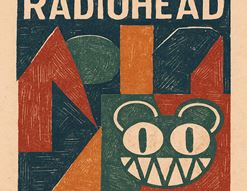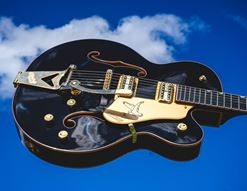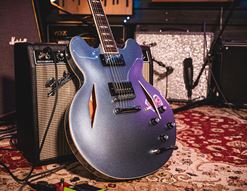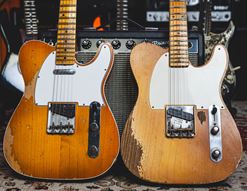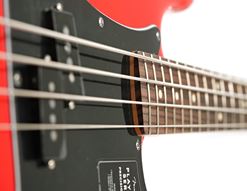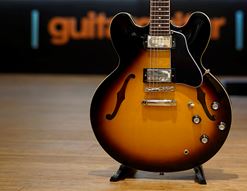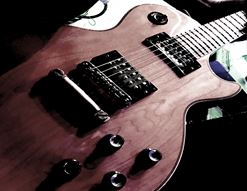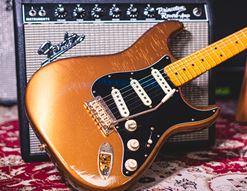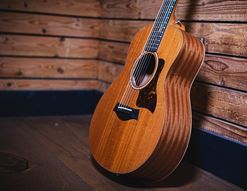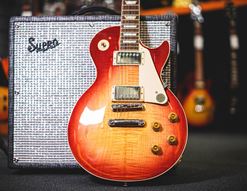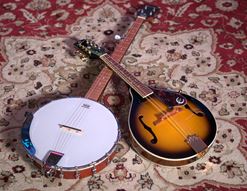In the pantheon of best-selling guitar brands, Ibanez are in the top row, just behind Fender and Gibson. They are one of the most distinctive and successful brands on the planet, and their reputation amongst rock, metal and jazz players is unprecedented.
They are also quite an unusual brand, in two ways. Firstly, they don’t trade on designs from the 1950s or 60s in any appreciable way, and; they are equally accepted amongst ultra-trad, dyed-in-the-wool jazzers as they are with the hardest of moshing metal maniacs.
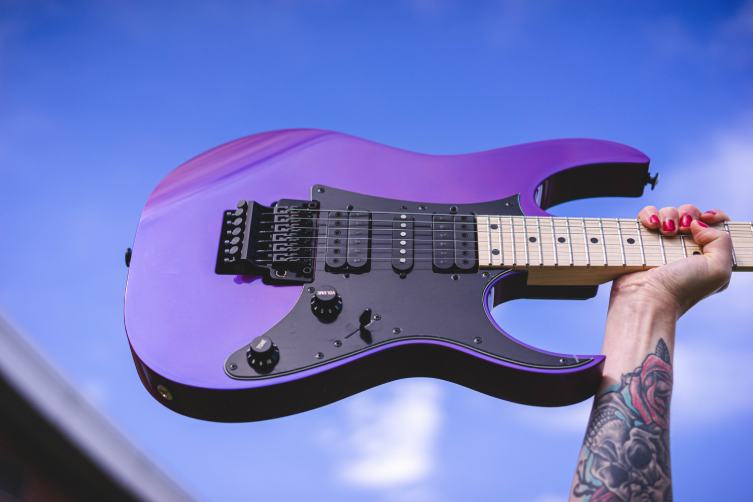
Most brands would struggle to achieve success in any one of those areas! Ibanez are quite the iconoclastic brand, and as part of ‘Ibanez month’ for guitarguitar’s 20th anniversary, I feel like it’s worth a quiet sweep through the brand.
I’ve been an Ibanez fan for decades, I’ve sold loads of them in my previous life as a salesman, and I’ve had the distinct pleasure of chatting to some of Ibanez’s top artists such as Steve Vai and Joe Satriani. I say all this so that you can understand where I come from as a guitar person. I’ve got a lot of love for Ibanez, and hopefully that’ll shine through today as you and I skip through the various guitar ranges that Ibanez offer.
Care to join?
Contents
Early Days, Non-Lawsuits & Where Does the Name Come From?
Ibanez: Not Your Traditional Brand
Early Days, Non-Lawsuits & Where Does the Name Come From?
Whilst this blog isn’t really intended to be a history lesson, I suppose it’s okay if I set the scene a little bit, isn’t it?
Despite the Spanish sounding name, Ibanez are a Japanese company. They started out in 1908 (older than Fender by miles! Sacre bleu!) as a sales division of the Hoshino Shoten bookstore company, believe it or not! The parent company was Hoshino Gakki, and they built classical guitars. Interestingly, they chose the name Ibanyesu (in Japan only), as a tribute to Spanish luthier Salvador Ibanez: the word was changed to more closely reflect how the word is said in Spain. Ibanyesu actually didn’t change their name to ‘Ibanez’ until 1986, though it has always been 'Ibanez' outside of Japan.
Early electric guitars were made by a number of different factories. Aficionados among us will recognise companies like Teisco and Guyatone, for example: these were amongst those who made early Ibanez electrics. From 1970, Ibanez guitars were made in the now-famous Fujigen facility.
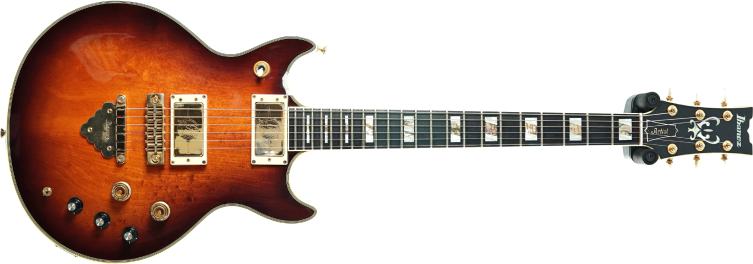
Non-Lawsuits
In the 70s, Ibanez were one of a number of manufacturers who based their instrument designs pretty squarely on those by Gibson (and, to a lesser extent, Fender). 70s-era Gibsons actually aren’t regarded as being the greatest in the world (a company called Norlin had taken them over and were cutting serious corners) and so these well-made copycats were increasingly seen as a worthwhile proposition.
Gibson weren’t very happy. Letters were sent, but the notorious lawsuits that everyone refers to in this era never actually occurred! Ibanez played ball, and either changed up their designs or abandoned them in favour of entirely new designs like the Artist and the Iceman.

The 1980s
I’m going to just jump forward to the 80s now, because it’s a significant time for the brand. As you know, loads of interesting musical things happened in the 1980s, but in guitar playing terms, it was a kind of ‘post Eddie Van Halen’ time. He’d changed up the game so much with not only his playing but his guitar (you know the one I mean) that the entire industry started offering their own take on the Superstrat - a high performance guitar with a sharpened Strat body, hot humbucker pickup and locking wiggle stick. Everyone was at it, and Ibanez were no different.
The big change for them came when NYC gunslinger Steve Vai outsourced his wild ideas for a guitar to a number of companies. Ibanez delivered the most impressive prototype and so won the contract to make what became the JEM guitar.

From the JEM sprang the RG (canter across to our Ibanez RG blog for more), a range of superstrats that remain in production to this very day! The RG is probably what springs to mind for most people when they think of Ibanez, but it’s only one branch of a pretty large tree. Skinny ‘S’ (Sabre) models were popular, alternative Talmans, Strat-like Roadstar models…there has always been a wide choice of guitar designs and finishes with Ibanez.
Alongside the spiky, shreddy, neon stuff, Ibanez were also building top quality archtop and semi hollow guitars. These attracted the attention of some of Jazz’s biggest names, such as Pat Metheny, John Scofield and George Benson. As I mentioned earlier, this is a trend that has continued since, with all of those aforementioned artists enjoying extremely long partnerships with the brand.
Ibanez Tiers
Ibanez offer guitars in pretty much all of the available price points. From beginner models to top-end boutiques and everything in between, Ibanez will have a presence, and usually a good choice of models: RGs, JEMs and more can be had whatever your budget is.
One thing I think is particularly cool about it is that Ibanez don’t use different brand names to separate their affordable offerings from their museum pieces: everything gets a proper ‘Ibanez’ logo emblazoned on the headstock. It’s a generous move and a confident one. I’ve noted in the past that the company’s quality control is uniformly excellent and, whilst you certainly get what you pay for with Ibanez just as much as with any other brand, it’s a sign that they sweat the details on cheaper guitars: it’s not just about the top-dollar instruments here.
So, how is it all arranged in terms of their product catalogue? There are a few levels of quality, all with their own sub brand. It goes a little like this:
Ibanez GIO: entry level models, made in both China and Indonesia, depending on the model. The most affordable Ibanez guitars on the market, and available in famous brand shapes such as the RG.
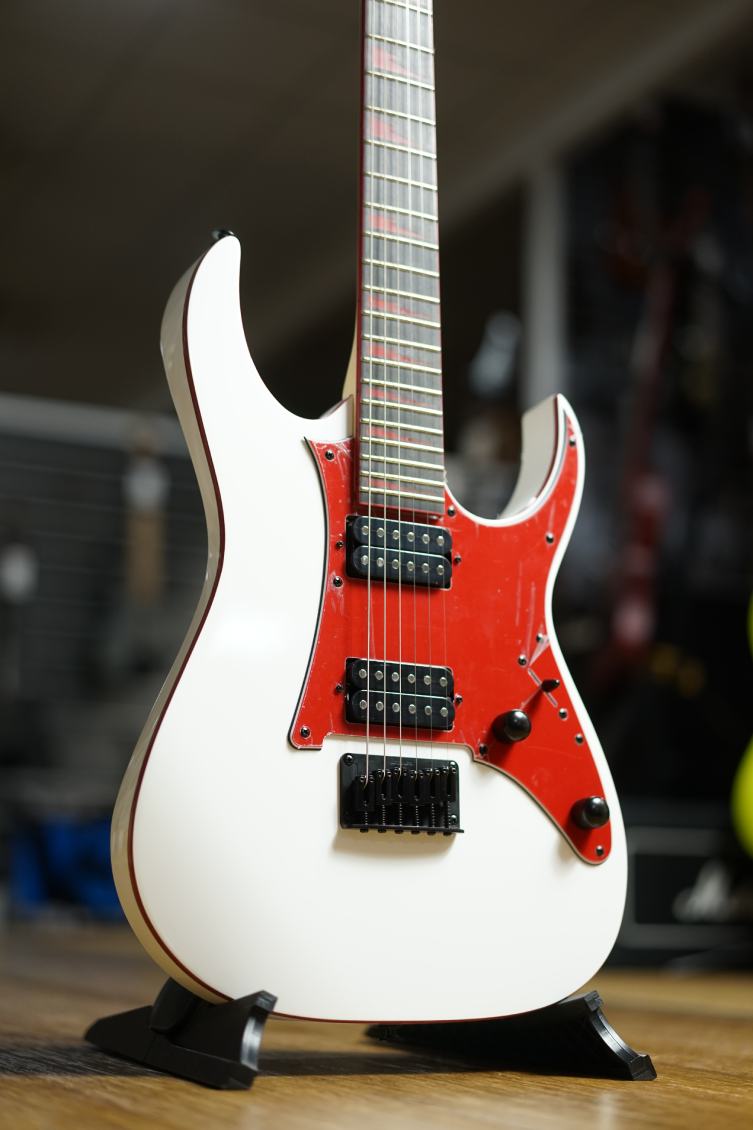
Ibanez Standard: the main range, which stretches from the top section of ‘affordable’ into the lower rungs of ‘mid-priced’. Here is where you’ll find a huge selection of guitars in a rainbow of colours. Usually, Standard range guitars will carry Ibanez-branded ‘in-house’ hardware and pickups (such as Infinity humbuckers).
Ibanez Iron Label: Geared specifically towards metal genres and correspondingly featuring specific hardware and (dark) finishes. This is an offshoot of the Standard line, not an upgrade per se.

Ibanez Premium: Made in Indonesia but with a higher level of build, fit and finish, the Premium line is an overall step up from the Standard models.
.jpg)
Ibanez Axion Label: Above Iron Label but below Prestige, the Axion Label is like a specific offshoot of the Premium range. Made in Indonesia to higher quality, the Axiom Label guitars tend to be RGA, RGD and S models, with ‘Nitro Wizard’ neck profiles, ‘Sub Zero’ treated frets and often no tone knobs.
Ibanez Prestige: Japanese-made, the Prestige range is the highest level of quality you can get before moving into J.Custom territory. Prestige instruments are top quality, and include pro level hardware (Gotoh bridges etc) and pickups from manufacturers like DiMarzio and Seymour Duncan.

Ibanez J.Custom: Ibanez J.Custom guitars are hand-made, boutique masterpieces from the J.Custom workshop in Japan. These are the best of the best, and feature stunning woods, inlays and finishes that won’t be found anywhere else in the Ibanez catalogue.
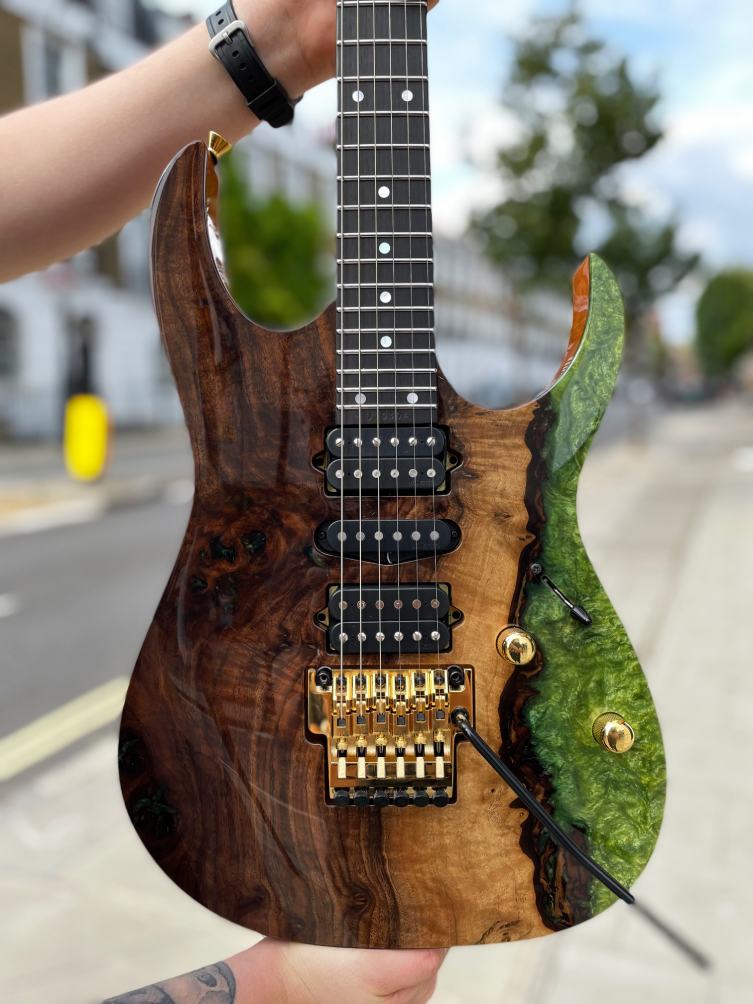
The Main Ibanez Models
In 2024, there is a good selection of models available that both back to the company’s past and push ahead to the future. Often, there are various subdivisions, so I’ll explain as many of these as I can without getting confused and falling over.
Artist Models
First off, I should address artist signature models because they are a daily disparate bunch. From Andy Timmons to Noodles from the Offspring, Paul Stanley to Joe Satriani, Lari Basilio to Polyphia, the roster of Ibanez artists out there are a broad bunch indeed.

Eccentricities are fully catered for here: Paul Gilbert loves having fake f-holes painted onto his solid body guitars, Satch is mad about chrome and Vai has a number of unmistakable features on his JEMS: the Monkey Grip, the Lion’s Claw and the Tree of Life are all pretty wild additions to a guitar!
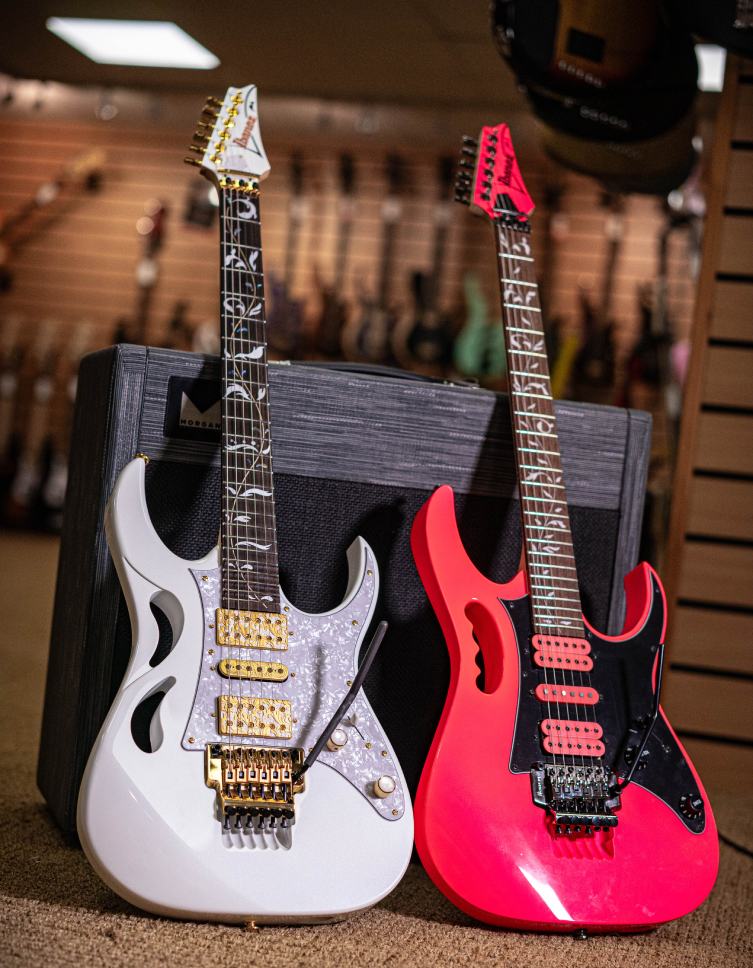
RG
The Ibanez RG: It stands for ‘Rock Guitar’ and it comes from Steve Vai’s JEM. Read more about the RG via the link above, but to summarise, it’s Ibanez’s take on the Superstrat. The original models had an H-S-H (humbucker - single coil - humbucker) pickup configuration and a locking whammy bar, but today there are loads of permutations.
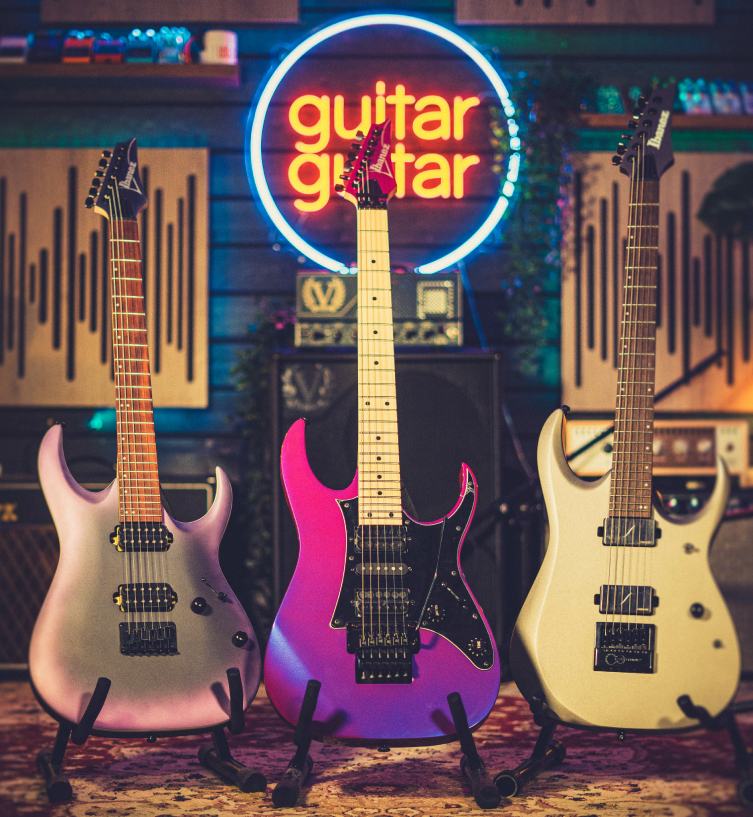
It’s the quintessential Ibanez guitar, and will be what most people think in relation to ‘Ibanez’. There are a few ‘sub brands’ of the RG, too:
RG: the OG model, taken from the JEM and simplified for a mainstream rock & metal audience.
RGD: A modern take with a longer 26.5” scale (for lower tunings), distinctive body contouring and almost always an H-H pickup configuration.

RGA: This lies somewhere in between the RG and RGD: it’s a standard scale length range, but has a carved, arched top and contoured cutaways.

For those who prefer to watch, here's Keiran with a video explainer on the main RG variations:
S
The Ibanez S (it stood for Sabre back in the day, but they don’t tend to use that term nowadays) is the one for jazz fusion players. Less aggressive looking than an RG, the S has had all of its sharp edges rounded off, and is a good deal thinner and lighter. S series guitars are available in a few different configurations, but most of the time, they are feature rich: H-S-H pickups, Edge tremolos and more.

Q
The Ibanez Q - short for ‘Quest’ - is a new addition. This is their response to the rise in fashion for headless guitars that has occurred in the last few years. Ibanez Q guitars have their own body shape and aesthetic, with specially designed bridges to accommodate for the lack of a headstock.
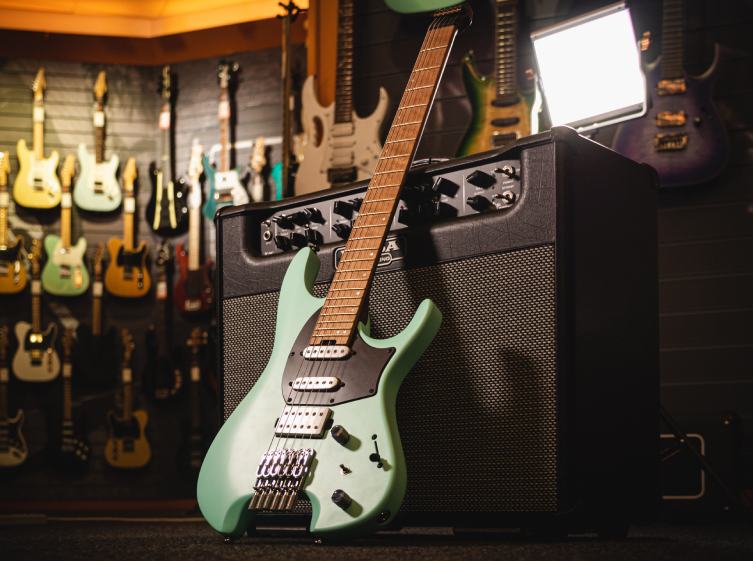
QX models have slanted frets (not multiscale, as you’d maybe think from a casual glance) to give your hand a more natural position on the fingerboard.
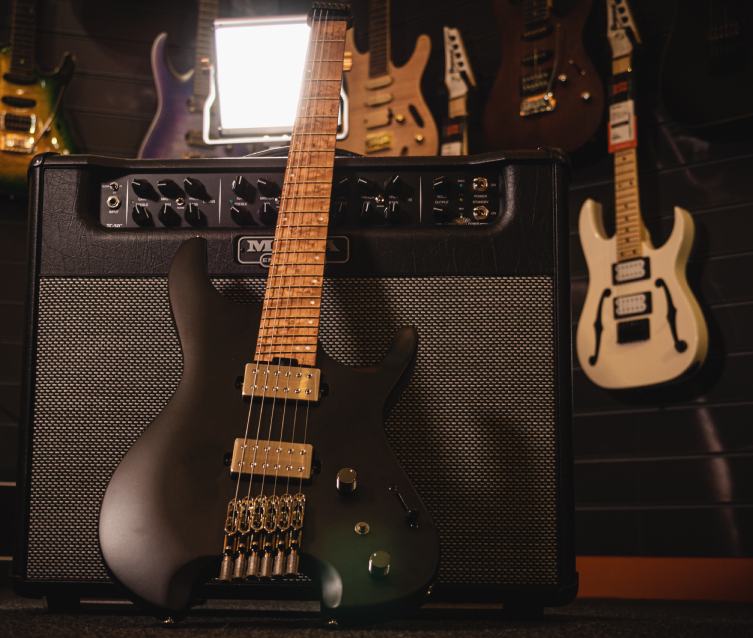
AZ
The Ibanez AZ range are - to me eyes at least - a response to the boutique Strat-type guitars we see from brands like Suhr and so on. They are perhaps more traditional looking than maybe Ibanez guitars, with less sharp edges perhaps? Spec-wise, higher-priced models are definitely impressive, with brand name pickups and Gotoh non-locking tremolos built onto relevant models. There are no locking whammies in the AZ series, since they seem to be aimed at providing an alternative to that entire vibe, whilst still offering high performance specs.

The AZ range splits roughly into three areas:
AZ: Spread across prestige, Premium and other areas of the Ibanez catalogue, the AS is a modern day Superstrat that’s somewhat less overtly ‘metal’ or ‘shreddy’ than an RG. Ibanez AZ models can have H-H or H-S-S pickup configurations, with or without pickguards, and can have 6 or 7 strings.

AZES: These are AZ models for the Standard range, so they are more affordable. These are more pointedly ‘Strat-like’ than the AZ models that don’t fall into this group.

AZS: If the other AZ models are derived from the Stratocaster, then the AZS is the Telecaster equivalent. It’s more of a single cut body shape, and the pickups and bridge are definitely more ‘1952’ in appearance than most of the guitars that Ibanez offer. It’s still unmistakably an Ibanez guitar though, with contemporary lines and curves in the body putting it quite apart from the other T-style electric guitars out there.

Shape Guitars
Ibanez have offered a range of ‘shape’ guitars since their lawsuit days in the 70s. The most original, not to mention enduring, would be the awesome Iceman.
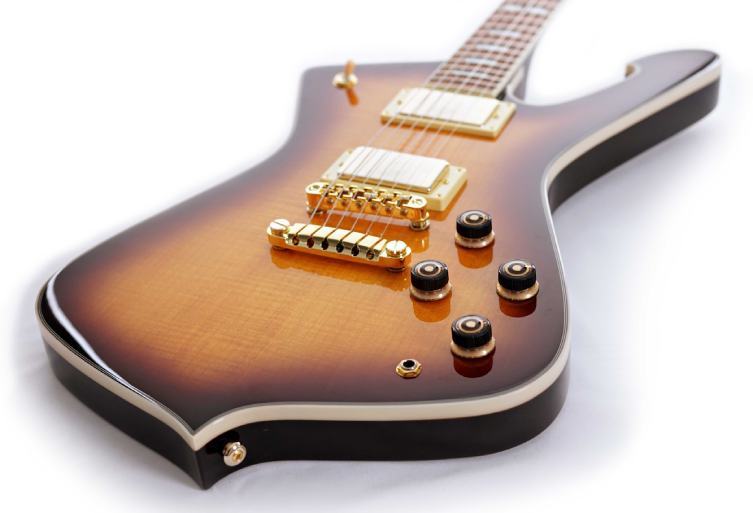
Like a Les Paul from Jupiter or Mars, the Iceman has a mahogany body, set neck and twin humbuckers (very LP) but a radically different silhouette. It has been offered in many variations throughout the years, including a cracked mirror model for Paul Stanley, a green star-encrusted version for White Zombie, and a brutal Iron Label 7-string in the current catalogue. Immense!

The Artist - or AR - shape is a throwback to the 70s, with a retro-inspired hard rocker that has appeared in many different guises over the years. Relatively niche these days, the AR is a legit alternative to an SG or Les Paul, for those who don’t like to follow the pack.
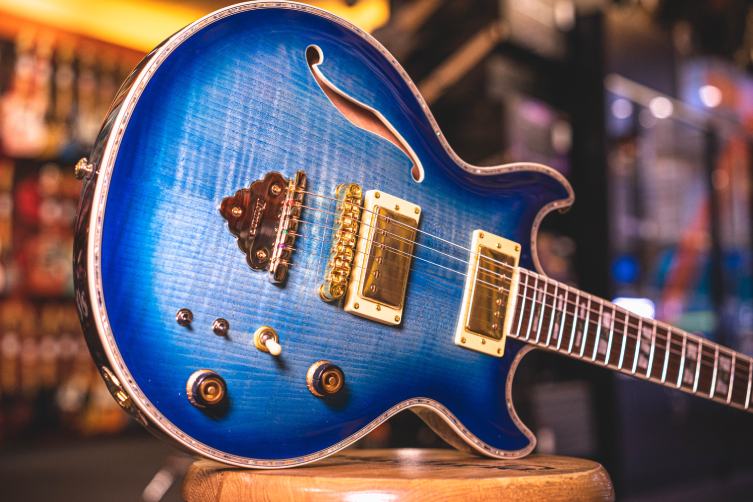
The X - which certainly used to be referred to as the Xiphos (some type of Greek sword, right?) - is a mean heavy metal ‘shape’ that resembles the letter ‘X’ to a fair degree. It’s similar to a Dean Razorback or other such Explorer-derived design and is also part of the current Iron Label sub genre.
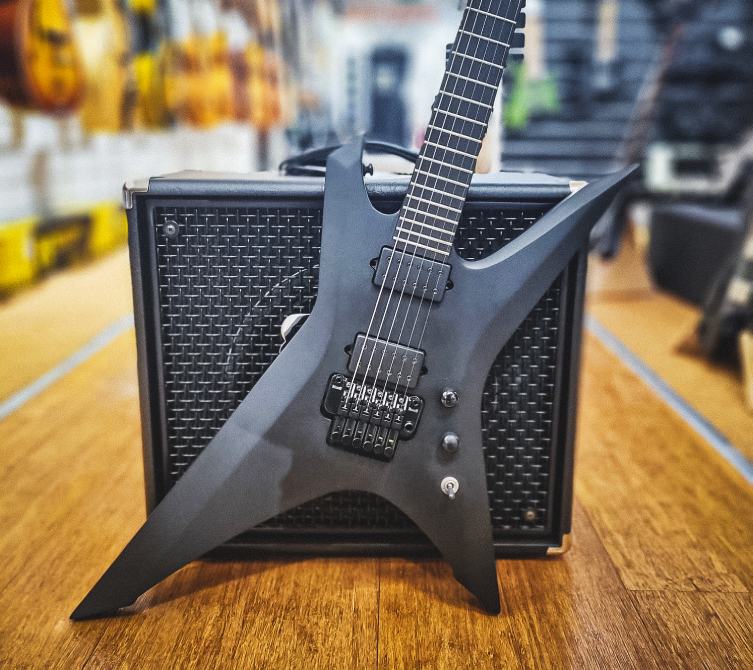
Hollowbodies - Artcore
Jazz and trad players are well served by Ibanez’s hollowbody guitars. As mentioned earlier, numerous notable players are associated with Ibanez hollowbodies, and as you’ve maybe come to expect, you get one hell of a guitar for the money here.
The overall term that Ibanez use for these guitars is Artcore, and certain of the more expensive models have the name Artstar. They break down into four main camps:
AS - Semi acoustic with a solid centre block. For association, I’d call these ‘ES335-like’.
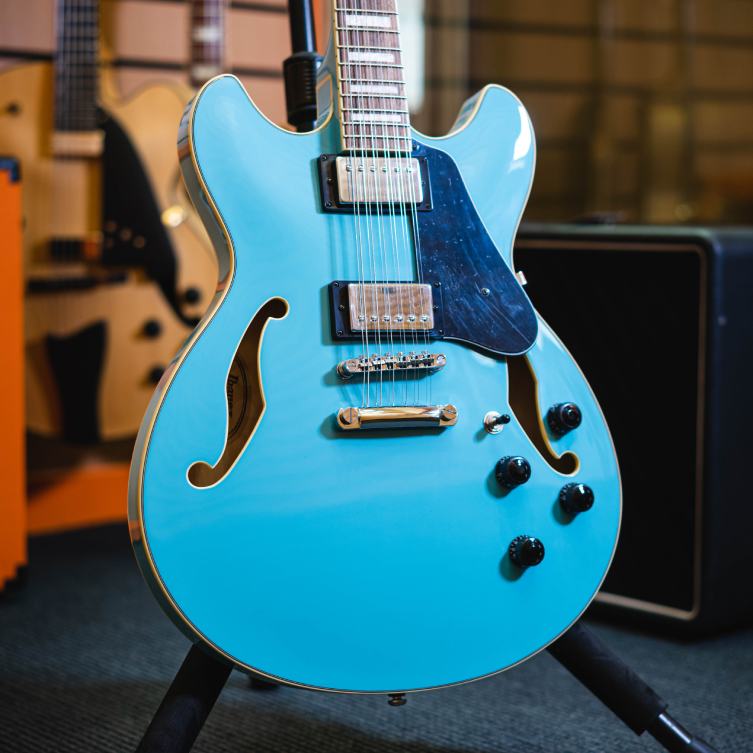
AF - Big bodied, fully hollow ‘jazzer’ guitars
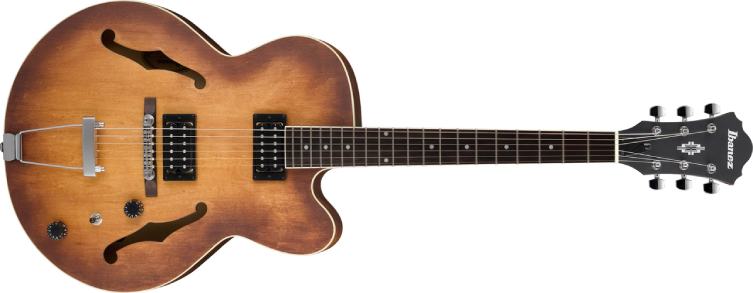
AG - fully hollow but with slightly smaller bodies
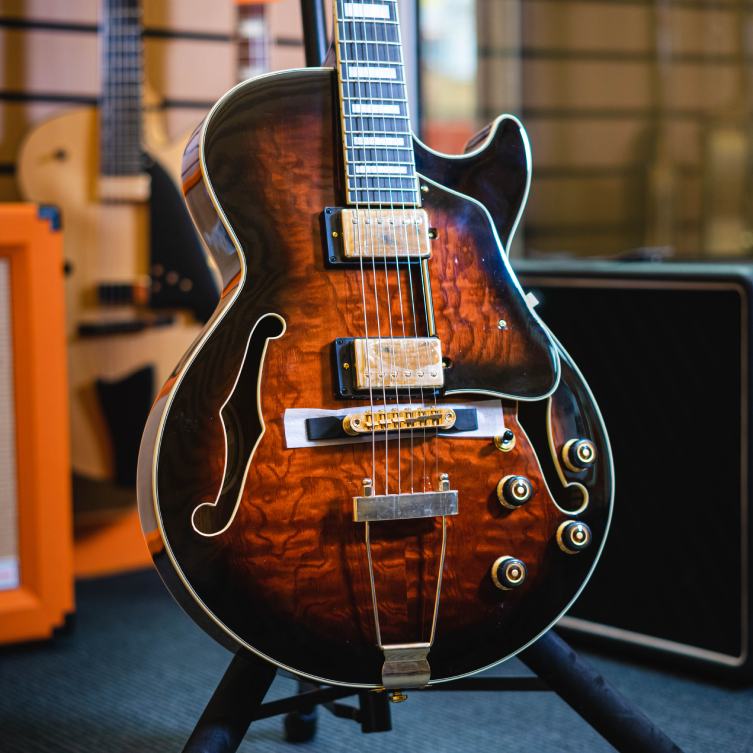
AM - smaller bodied double cutaway semis.
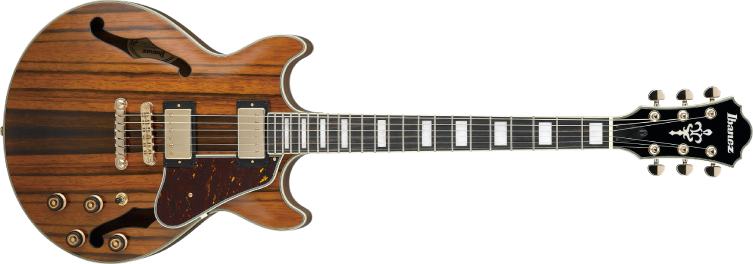
Ibanez: Not Your Traditional Brand
I think it’s excellent that such a risk-taking brand like Ibanez continue to do well on the market. They’ve never particularly played it safe, they’ve always attracted some of the biggest names in the business and they’ve added more than a few all-time classic guitar designs to the books. On top of that, they’ve never forgotten how important entry level guitars are, and they’ve always understood that gatekeeping cool finishes for expensive guitars only is a real folly in the guitar market.
I haven’t even touched on their basses or acoustics today - or the Tubescreamer! - because there has already been so much to go over with just the electric guitars. Suffice to say, Ibanez are a favoured brand here and we are all particularly big fans here at guitarguitar. Next time you’re in one of our stores, make sure you check out the colourful, eccentric, expertly-built and often surprisingly affordable guitars over at the Ibanez section of the store.
Click to View our Selection of Ibanez Electric Guitars



